We want to contribute to the improvement of regional brands, the satisfaction and safety of consumers' food, and Japanese agriculture by establishing advanced agriculture and making delicious and healthy vegetables. We have built a nursery and a greenhouse using artificial light in Hanyu, Saitama , and are cultivating and researching lettuce and tomatoes through soilless culture. We aim to create functional vegetables through joint research with Tsukuba University and build our own brand by cultivating hydroponics.
About Soilless Culture
Soilless culture does not use soil like normal cultivation in the process of cultivation. Crop production is carried out by giving a solution containing fertilizer instead of soil. In addition, soilless culture can be classified into two types, "solid medium cultivation" and "hydroponics", depending on the presence or absence of medium.
Soilless culture has the following advantages over soil cultivation.
| FEATURE01 | Safe crops can be made because the effects of pathogenic bacteria and pests are small, and the use of pesticides is minimized. |
|---|---|
| FEATURE02 | The quality of the crop is not affected by the soil, as the optimal amount of moisture and nourishing can be supplied when the crop is needed. |
| FEATURE03 | Soilless culture is usually carried out in an environmentally controlled plastic greenhouse, so it is possible to harvest crops 365 days a year by devising the appropriate environment. |
| FEATURE04 | Since the control of cultivation equipment can be automated, cultivation is easy even for workers with little agricultural experience. |
| FEATURE05 | By controlling the composition and environment of the solution, we can add functionality to crops. |
About solid medium cultivation
Solid medium cultivation supplies nutrient solution in a condition close to soil cultivation through inorganic materials such as rock wool and organic materias such as peat moss and palm shells. It is mainly used for the production of fruit vegetables such as tomatoes and strawberries that can be harvested all year long once planted. The medium has excellent fertility, water retention and superior ventilation. However, while it is an environment where roots are easy to grow, it takes time and effort to dispose and disinfect the medium after use.
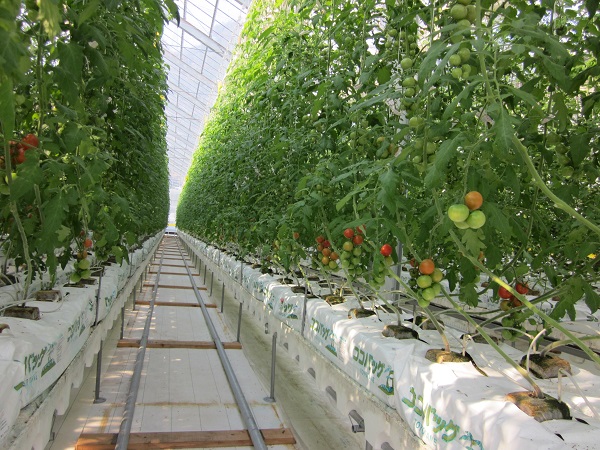
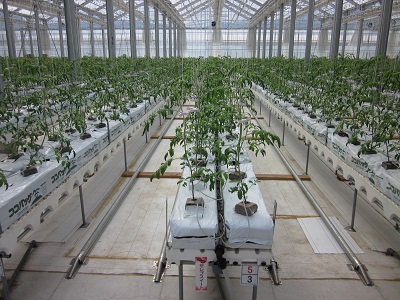
About hydroponics
Hydroponics is characterized that crops are cultivated only with nutrient solution without using medium. It is cultivated mainly from leafy vegetables, but it can also produce fruit vegetables and root vegetables by ingenuity. Since hydroponics does not use medium, there is an advantage that it can reduce the time and waste of media renewal compared to solid medium cultivation.
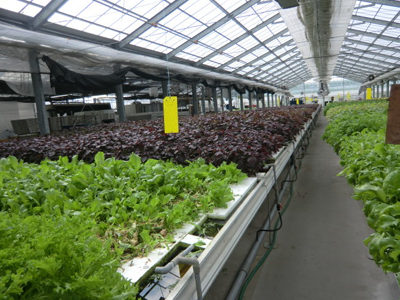
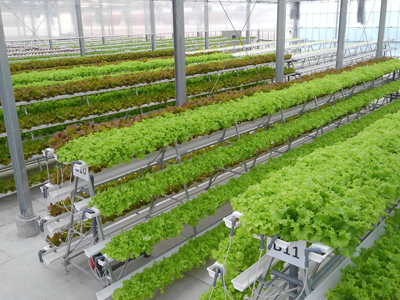
About Hanyu Farm
Features:Artificial light-based nursery and solar-based greenhouse
Inside the research laboratory, there are nursery rooms, warehouses, packing rooms, offices, and rest rooms. By air showering and managing the moving line we make sure that all the process from production to delivery can be performed in a clean environment that does not touch the outside air. We also take a great care of safety, security and stability for our products more than ever. In the plastic greenhouse attached to the research laboratory, we cultivate seedlings that was grown in the nursery, and produce lettuce and tomatoes with excellent taste. We remotely monitor and control the environment in the greenhouse any time by the sensors and cameras installed.
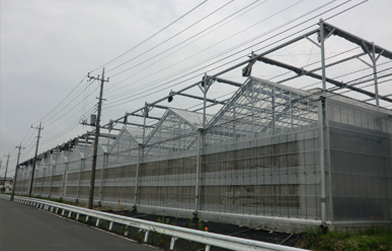
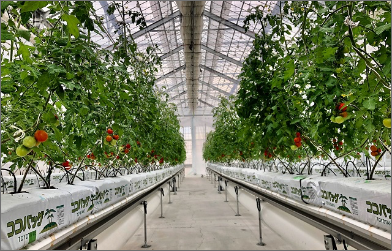
Lettuce cultivation flow

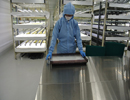
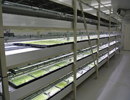
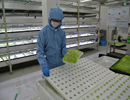
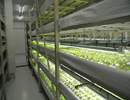
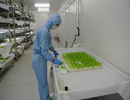
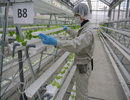
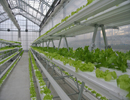
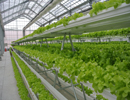
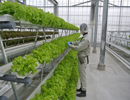
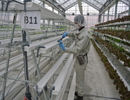
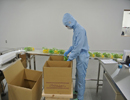
About functional vegetables
Functional vegetables are made to have enriched ingredients that is not originally contained at all or contained only a very small amount by using certain technology. There are a few ways to produce functional vegetables such as (1) add nutrition in production process, (2) increase nutrition using appropriate production method, (3) create higher nutrient vegetable by breeding. We also include vegetables with low content of harmful ingredients as functional vegetables.
■ High Iron Lettuce
Includes 4 times more iron than usual leaf lettuce (4mg/100g)
Anemia prophylaxis, making skin more beautiful
■ Low Kalium Lettuce
4 times less Kalium included compared with the normal leaf lettuce
(Less than 1/4)
Good for people with potassium intake restriction
*Can add less nitrate function to all types of lettuce
Currently, in collaboration with the University of Tsukuba, we are conducting research on the cultivation of functional tomatoes such as lycopene, β-carotene, and GABA. → About joint research with University of Tsukuba.


